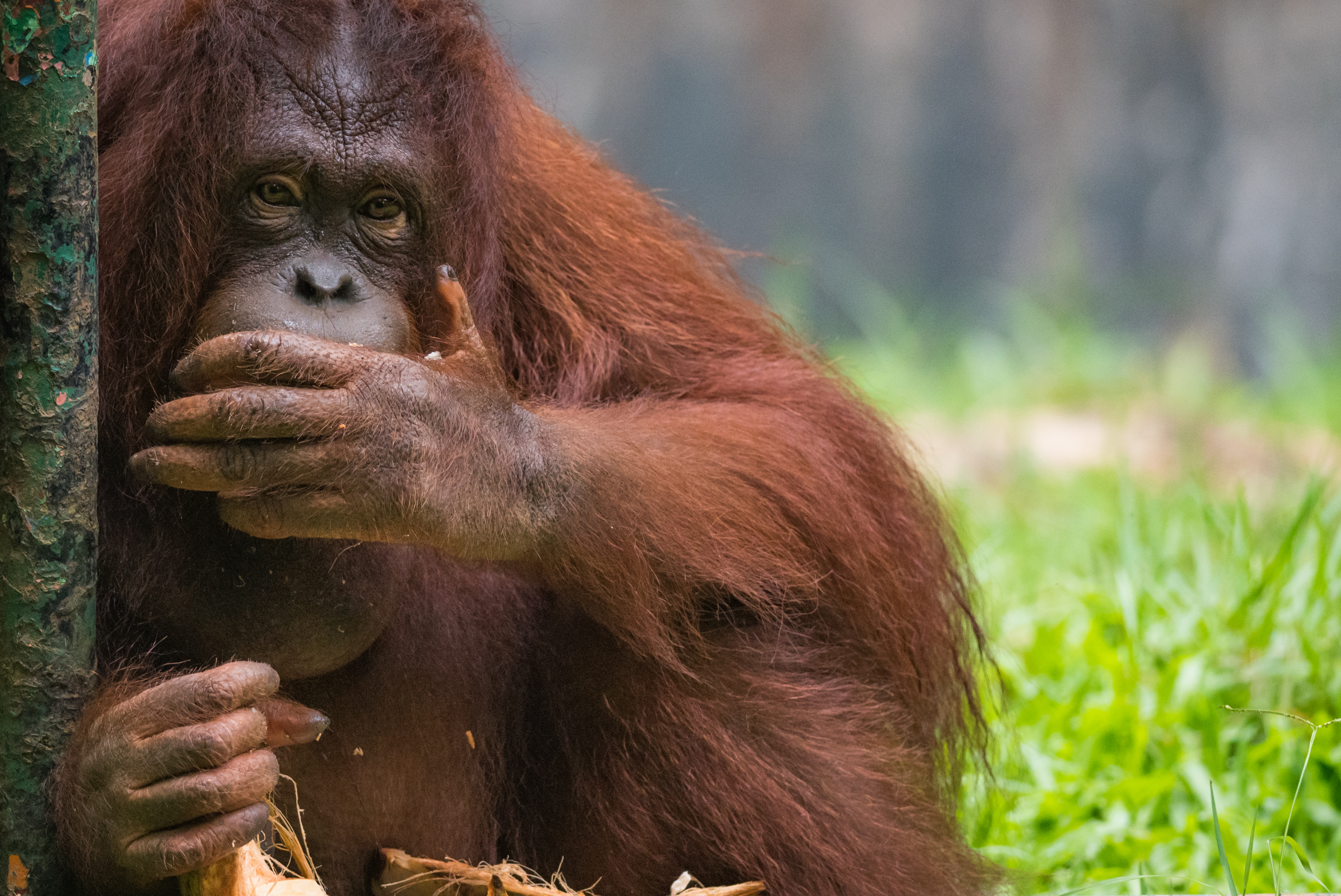
Humans have a long, dark history of coming up with “miracle” products that facilitate our lives and then become so in-demand that it’s hard to stop using them, despite their ill-effects on the environment and wildlife. Plastics, fast food, and paper cups are just some obvious examples.
One such product that certainly falls into this sad category isn’t an immediately obvious one, but dig a little deeper and it still has some of the most devastating effects on biodiversity yet: palm oil. And even though you’re probably not cooking with it, odds are you use it multiple times over the course of your day.
What is palm oil?
Palm oil is an edible vegetable oil that comes from the palm fruit, which grows on the African oil palm tree. These trees are native to Western Africa, but grow in tropical climates with lots of rainfall. Typically it’s grown throughout Africa, Asia, North and South America, but 85 per cent of all palm oil is produced and exported from Indonesia and Malaysia.
What is it used for?
Traditionally this oil is quite versatile, comes with a low price tag, has a long shelf life, and is trans-fat free, which makes it a popular choice in the food, cosmetic, and biofuel industries. These days more than 30 per cent of the world’s vegetable oil production is palm oil, with tens of millions of tons being produced annually.
So what products have it?
According to the World Wildlife Fund, palm oil is now found in about half of all packaged products sold in the supermarket. From margarine and instant noodles to baked goods, chocolate, pizza dough, breads, and ice cream, odds are you have several products kicking around your kitchen that list palm oil as an ingredient. In some countries palm oil even slinks by under the guise of “vegetable oil,” but here in Canada the Canadian Food Inspection Agency requires all products containing palm oil to disclose as much.
Meanwhile, palm oil is also found in many cosmetics, shampoos, cleaning agents, washing detergents, and even toothpastes, making it the single most popular oil in our households.
Palm oil versus palm kernel oil
Although these two oils share a similar name and are derived from the same plant, that’s where the similarities end. Palm kernel oil is produced from the kernel or seed of the fruit in oil palms, and it contains more saturated fats than palm oil. It is also commonly used in commercial cooking as the high fat content makes it more stable at high temperatures and gives it a long shelf life.
The good
Given palm oil’s predominant use in so many products, the livelihoods of more than five million people across Southeast Asia depend on it. From growers to manufacturing operations, the palm oil industry accounts for almost half of Malaysia’s agricultural GDP. Meanwhile in Singapore where major palm oil growers and traders have set up shop it drives financial hubs, supplying loans and investments to such companies.
From a health perspective, palm oil is also one of the better oils to consume as it’s trans-fat free and has a high smoking point. Some studies have suggested it can also be good for brain and heart health as it contains tocotrienols, a form of vitamin E with strong antioxidant properties.
The bad
Because of the increased global demand for palm oil, it’s no longer being responsibly sourced. Indiscriminate deforestation, loss of habitat, water and air pollution, accelerated climate change effects, and a disregard for Indigenous people’s land and livelihoods are all negative effects of irresponsibly sourced palm oil, according to the WWF.
The ugly
Although plenty of species are affected by palm oil production, it’s downright killing orangutans, which have lost over 90 per cent of their habitat in the last 20 years. Over 50,000 animals on the islands of Borneo and Sumatra have died to-date as a result of palm oil deforestation, and it has been reported that at this rate they will be extinct in the wild within the next five-to-10 years.
A sustainable source
The good news is that palm oil can be produced without deforestation, something the Roundtable on Sustainable Palm Oil (RSPO) is paying close attention to. The organization has come up with a globally available certification process that helps consumers ensure the products they’re purchasing are sustainable, and allows the public to see which companies (including those in Canada) have earned such status.
Top producers
According to the Union of Concerned Scientists [UCS], many companies began using ethically sourced palm oil in earnest four years ago. In its 2015 report on American retailers and producers the organization found that companies like Nestle, Danone, Kellogg’s, L’Oreal, P&G, PepsiCo, and General Mills all had a strong commitment to using ethically sourced palm oil for its products.
Meanwhile, store brands like Costco and Dollar Tree showed no commitment, and fast-food joins like McDonald’s, Burger King, Starbucks, Dairy Queen, Wendy’s, and Domino’s showed little-to-no-commitment at the time.
In a 2016 report delving into companies that use responsibly sourced palm oil, the WWF asked five Canadian companies about their own commitments. Of those only Restaurant Brands International responded and was given a “leading the way” status thanks to its global commitment to use all 17,544 tons of its palm oil from Certified Sustainable Palm Oil (CSPO) sources. Canada Bread, Cara Operations, Pizza Pizza, and Sofina all declined to participate in the conversation.
How to help
Companies that have yet to switch to sustainable palm oil cite cost and a lack of consumer awareness as the two main reasons they aren’t committed to changing their practices. That makes it vital for consumers to write to companies that make their favourite products and urge them to use CSPO sources instead. Supporting companies that have already made the switch isn’t a bad idea either, nor is spreading the word about such practices.
Orangutans and rainforests certainly depend on it.
